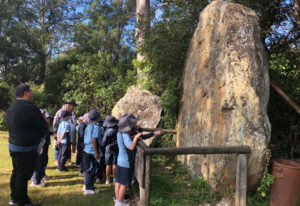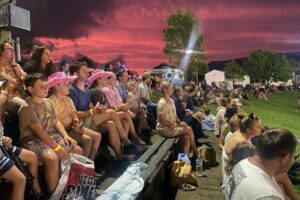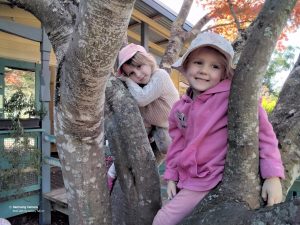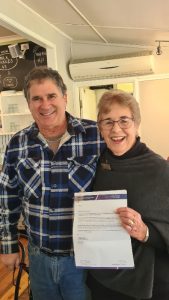On 12 February 2025, there was a meeting between the Kangaroo Valley Historical Society and Reconciliation Allies Kangaroo Valley (RAKV), which has set the stage for exploring new ways of seeing the history of Kangaroo Valley. The meeting was made special by the participation of senior Aboriginal Elder, Uncle Gerry Moore OAM, and his brother, Peter Moore, both proud Yuin men from Wreck Bay, whose family has ancestry going back to Kangaroo Valley. Given that NAIDOC Week falls in July, where the theme is Next Generation: Strength, Vision & Legacy, RAKV would like to convey more widely the work that has been embarked upon.
Information about the Historical Society can be found here.
With its many accessible publications, it is well worth browsing through their website. Peter Dumbrell reported that they have a lot of material in electronic form regarding Aboriginal history, such as interviews with Dharawal historian Les Bursill, scanned documents, audiotapes and so on. The Historical Society is currently looking for an online storage site. Some of this work can be found here.
Some discussion was on the representation of Aboriginal history and culture within the museum itself. The sealed exhibit room that houses more delicate exhibits includes the only local Aboriginal exhibit, which is an intricately woven basket made from Dharawal palm leaves and lined with cotton cloth. As Garth Chittick, President of the Historical Society noted, the rest of the Aboriginal exhibits are from outside the Valley.
Uncle Gerry Moore – forming a relationship and sharing knowledge
Uncle Gerry Moore and his brother Peter were active participants in the discussion. An interesting overview from Uncle Gerry that “we are all visitors” was matched by Garth when he observed that “nothing is owned by anybody”.
Uncle Gerry said we are bound together in our history – some parts are good and others not so. In forming a relationship and sharing knowledge with each other, we would have a better understanding of what has occurred, including what he referred to as some “uncomfortable truths”. As he expressed it, between the Historical Society and local Elders, we have “living libraries” on both sides.
He gave an account of his mother’s origins and way of life as a Wodi Wodi Dharawal-speaking family. He said that in their movement across Country between the Snowy Mountains in the south and as far north as La Perouse, the Valley was important as it provided an opening to the coast from the highlands. Access was provided by traversing a particular place, which was a shallow stretch across the Shoalhaven River.
Uncle Gerry is of the view that whilst oral history from local Aboriginal people currently is held in the Australian Institute for Aboriginal and Torres Strait Islander Studies, more oral history is needed, and it is also important for us to work with and create partnerships with farmers who may have felt reluctant to disclose cultural heritage on their landholdings.
Next steps
Towards the end of the meeting, we came to discuss “what’s next”? Garth Chittick expressed the hope that something would flow from the meeting. There was a strong feeling that this first meeting should not be a one-off event.
There was some discussion about the nature of a museum providing artefacts in confined spaces whilst Aboriginal heritage is primarily “out there”, not indoors. On this train of thought, the meeting supported focusing on Aboriginal culture that can be found in the outdoors. Peter Moore put forward the idea of cultural walks as a way of expanding the museum. He suggested that RAKV and the museum talk to landholders about this. Other suggestions that arose from the meeting were that a History Yarn be arranged and that a corroboree be held at the site of the museum.
Since then, we have benefited from the creation of a Kangaroo Valley history blog by historian and archivist Michael Organ, author of Illawarra and South Coast Aborigines 1770–1850. His work including the blog entitled Kangaroo Valley Aspects of Australian Indigenous cultural heritage can be accessed here.
There have been ongoing informal discussions regarding how to advance the suggestions that came out of the meeting in February. One suggestion is to have a major event along the lines of Kangaroo Valley Stories -– from deep time to the present. If you would like to be involved in this conversation, please email allieskv@gmail.com. Watch this space!
Sarah Waddell
On behalf of RAKV
Based on content available here.
Email: allieskv@gmail.com




